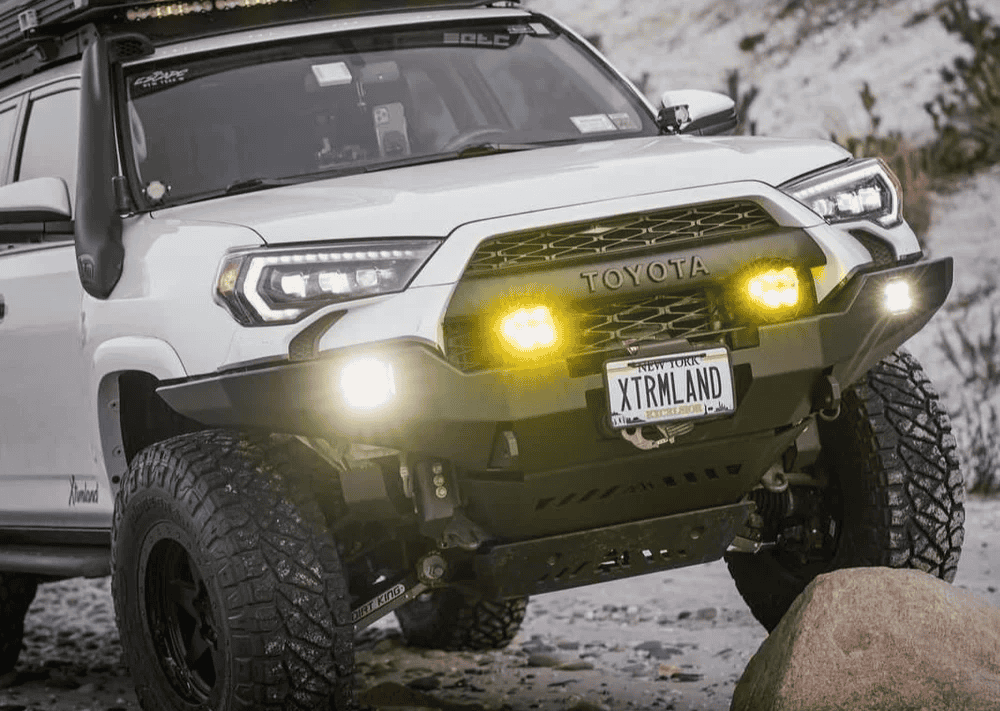Overland Vehicles

Arkansas rewards careful setup. The Ozark and Ouachita ranges deliver steep grades, slick clay, and narrow forest roads that punish sloppy weight balance and weak tires. A shop that knows local routes will tune for clearance, traction, and cooling so the truck climbs without drama and descends without brake fade. Planning for deep summer heat, spring rain, and short winter ice events keeps systems stable and trips predictable.
Expect long stretches of graded gravel broken by ruts, rock ledges, low water bridges, and sudden washouts. Common runs near the Buffalo National River, the Ozark National Forest, and Wolf Pen Gap require strong sidewalls and a suspension that keeps contact on broken terrain. Airing down, monitoring temps, and keeping weight low and centered helps the truck stay composed mile after mile.
Humidity and heat dominate much of the year. That means fresh cooling system service, proper transmission temps, and airflow around the engine bay. Electrical systems should be fused cleanly with corrosion resistant terminations. Summer storms arrive fast, so recovery points, a clean winch line, and traction boards earn their keep when clay turns to grease.
Arkansas lighting rules require proper aim and cutoff for auxiliary beams, with amber for dust and fog. Keep fenders and mud protection in mind to avoid fling on pavement. Tire size should match the truck’s gearing and brakes, and a speedometer recalibration helps avoid errors. Visibility, noise control, and secure cargo all contribute to safe, quiet travel on mixed surface days.
Every overland build starts with payload math. List passengers, water, fuel, tools, recovery gear, and camping supplies, then compare the total to the truck’s available payload. Choose a suspension matched to that constant load rather than a generic lift. Progressive rear springs or quality air helper options can control squat while preserving ride quality, and shock valving should be selected for sustained gravel speed without overheating.
Armor protects time more than metal. A strong front solution with recovery points, skid plates under vulnerable components, and rock sliders that actually hold weight will save trips from being cut short. Pair this with a tidy underbody layout so nothing drags or snags on brush.
Tires do much of the work in Arkansas. A durable all terrain with reinforced sidewalls and a load rating suited to the build is often the best match. Mud terrains shine in the worst slop but bring noise and weight, so consider your travel mix. A full size spare on the ground and tools for safe changes are non negotiable.
Power and comms shape comfort and safety. A simple dual battery or modern lithium system with a DC to DC charger keeps fridges and lights running without tying up the starting battery. Add clean switching for lights and air compressor use, a reliable radio for group travel, and a mount for satellite messaging in the backcountry. Water storage with a filter, a compact galley box, and modular drawers reduce clutter and protect cargo on corrugated roads.
Recovery is more mindset than kit. Know your truck’s real tow points, carry soft shackles and rated straps, and practice smooth pulls. A winch with a synthetic line, a jumper pack, and an inflation kit round out the basics. Train on easy ground before relying on any tool in a storm.
The best shops do more than bolt on parts. They verify payload numbers, align geometry after every change, and keep wiring tidy with labeled circuits and proper protection. Ask to see in house fabrication, CNC work, and examples of sealed wood or metal enclosures built to eliminate squeaks and rattles. A proper handoff should include a feature walk through, tool locations, and a shake down plan on mixed terrain near Fayetteville.
Look for teams who build to your routes. If you split time between the Ozarks and long interstate days, they should tune shocks for both. If you chase dirt bikes or paddle the Buffalo, storage for wet gear and a compressor layout that fills tires quickly between trail segments becomes central. The result is a quiet cabin, easy access to essentials, and a strain free drive home.
If you want to see what a dedicated Arkansas team can deliver, explore Overland rigs in Arkansas and review the process behind a Custom overland upfit. Curious about build quality, testing, and handoffs in Fayetteville? Read Why choose OZK Customs to understand how a project moves from planning to trail ready.
Bring a list of trips, not parts. Describe seasons, people, pets, and sports. A good shop reverse engineers the system from that use case and prioritizes what matters now, leaving room for simple upgrades later. This keeps the truck within payload, within budget, and always ready to roll.
The mark of a well planned Arkansas truck is silence on washboard, cool temps in summer traffic, and lighting that helps at dusk without blinding anyone. Doors open to organized storage, the fridge slides smoothly, and tools sit exactly where you expect them when the rain hits.
If this guide clarified your plan, the next move is simple. Share your routes, payload, and must haves with a Fayetteville builder that knows the Ozarks and builds for real travel. We will translate your map into a clear scope and deliver a truck that stays composed from forest road to freeway.
More From OZK Customs:
Ready to dial in a capable, quiet, and reliable Arkansas overland truck with smart power, suspension, and storage that fits your travel style. Tell us where you go and what you carry. We will map the build, schedule your slot, and hand you a tested rig set for the Ozarks and beyond.
ADDRESS:
6159 E Huntsville Rd, Fayetteville, AR 72701
PHONE:
(479) 326-9200
EMAIL:
info@ozkvans.com